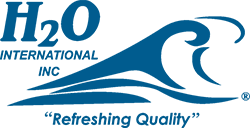- Home
- Learn
WWIF is a 501(c)(3) non-profit organization that provides clean, safe drinking water in developing areas.
- Categories
Location
Function
Technology
Brand
- Catalogue
- System Components List
- Distributor
We offer a full line of undersink water filtration options to meet your needs in the Kitchen, Boat, RV or Office.
Take a look at our latest offerings
Undersink
Add description
Add why heading

Why image
We offer subscriptions on all cartridge and filters products. Save up to 15% on all subscription orders.
Coming Soon
Benefits
All you need to know about Undersink Filtration Systems
Undersink water filters are filtration systems installed beneath the sink to provide clean and purified drinking water directly from the tap. Here’s all you need to know about them:
Filtration Process: Undersink water filters employ various filtration technologies to remove contaminants from tap water. Common filtration methods include activated carbon, reverse osmosis, and sediment filtration. These filters effectively remove impurities such as chlorine, lead, bacteria, viruses, heavy metals, pesticides, and other pollutants, ensuring safe and clean drinking water.
Installation: Undersink water filters require installation beneath the kitchen sink, typically connected to the cold water line. The undersink water filter installation usually involves attaching the filter unit to the water line and installing a separate faucet for dispensing filtered water. While installation may require some plumbing knowledge, many models come with detailed instructions for DIY installation. Professional installation services are also available for those who prefer assistance.
Space-saving Design: One of the main advantages of undersink water filters is their space-saving design. By installing the filtration system beneath the sink, it doesn’t occupy valuable counter space, providing a clutter-free and aesthetically pleasing solution for accessing purified water.
Continuous Filtration: Unlike countertop or pitcher filters that require manual refilling, undersink water filters provide continuous filtration. Once installed, they deliver purified water on-demand directly from a dedicated faucet, offering convenience and accessibility for drinking, cooking, and other household uses.
Cost-effectiveness: While undersink water filters may have a higher initial cost compared to countertop or pitcher filters, they often provide better filtration performance and cost savings over time. They eliminate the need for purchasing bottled water and can be more cost-effective in the long run, especially for households that consume a significant amount of purified water.
Customization Options: Undersink water filters come in various models and configurations to suit different water quality needs and preferences. Some systems offer multiple stages of filtration for enhanced purification, while others focus on specific contaminants or filtration methods. Consumers can choose the filter system that best fits their requirements and budget.
Maintenance: Regular maintenance is essential to ensure optimal performance and longevity of undersink water filters. This typically involves replacing filter cartridges according to the manufacturer’s recommendations, which can vary depending on water usage and filtration capacity. Many models feature easy-to-replace cartridges and indicator lights to signal when it’s time for replacement.
Water Waste: Some undersink water filters, particularly those using reverse osmosis technology, can produce wastewater during the filtration process. However, advancements in filtration technology have led to more efficient systems with reduced water waste.
Overall, undersink water filters offer a convenient, space-saving, and cost-effective solution for accessing clean and purified drinking water directly from the tap, making them a popular choice for many households, Boats, RVs, and Offices.
FAQs
What is an undersink water filter, and how does it work?
An undersink water filter is a filtration system installed beneath the sink to provide purified drinking water directly from the tap. It uses various filtration technologies, such as activated carbon, reverse osmosis, and sediment filtration, to remove contaminants like chlorine, lead, and bacteria from tap water, ensuring the water is clean and safe for consumption.
How do I install an undersink water filter?
Undersink water filter installation typically involves connecting the filter unit to the cold water line under your kitchen sink and installing a separate faucet for filtered water. While some homeowners opt for DIY installation using the detailed instructions provided with the filter, professional installation is recommended for those unfamiliar with plumbing.
What are the benefits of choosing an undersink water filter over other types?
Undersink water filters offer a space-saving design that does not take up counter space, providing a clutter-free kitchen environment. They also deliver continuous, on-demand filtration, eliminating the need to refill units manually. This makes them more convenient and efficient, especially in settings like homes, offices, boats, and RVs.
Is it cost-effective to install an undersink water filter?
While the initial cost of an undersink water filter may be higher than that of countertop or pitcher filters, they generally offer superior filtration and longer-term savings by reducing the need to purchase bottled water. They are particularly cost-effective for households and offices that use large quantities of purified water.
What maintenance is required for undersink water filters?
Regular maintenance, including replacing the filter cartridges, is important for maintaining the efficiency and longevity of undersink water filters. Many models are designed with easy-to-replace cartridges and include indicator lights to remind users when it’s time for a new cartridge.
Do undersink water filters waste a lot of water?
Some undersink water filters, especially those using reverse osmosis technology, may produce some wastewater. However, recent advancements in technology have incredibly reduced the amount of water wasted, making these systems more efficient and environmentally friendly.
Recommended Categories
Whole House
Kitchen
Bathroom
Laundry
Office
Boat/RV
On-the-Go
Cartridges & Filters

Filter
Location
Function
Technology
Brand

